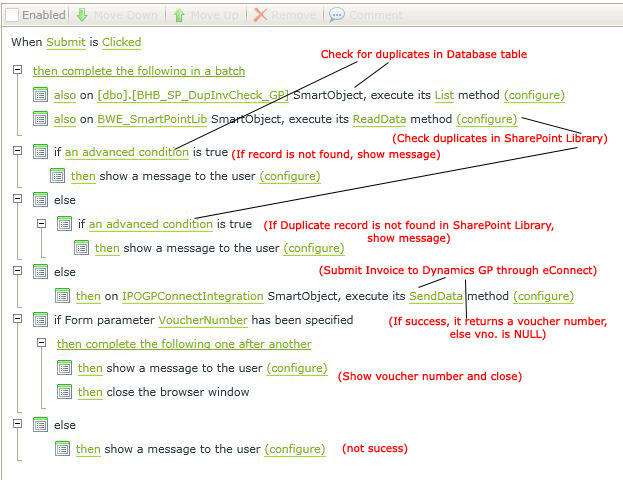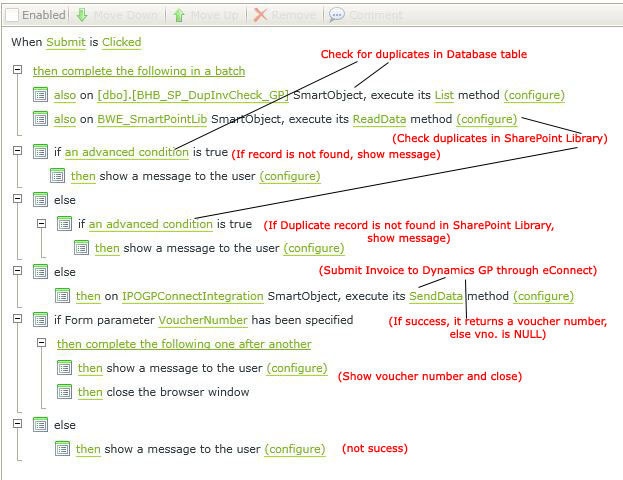Hi guys,
I need to run the complex rules in the form upon submit. The rules are not very complex but I do not know the best way of handling the conditions. So, I am looking for some suggestion and best practice.
1. Checks for Duplicates in database. If found, inform user through messagebox that duplicate record (invoice) already exist. Else do step 2
2.Check for Duplicates in SharePoint document library (actually meta-data check). If found, inform user through messagebox that duplicate record (invoice) already exist. Else do step 3
3. run the Custom Service Broker smartobject to submit invoice into GP. If sucess, it returns vouchernumber. Show the vouchernumber in messagebox otherwise show another messagebox -invoice submission failed.
Please have a look at rukes I defined. not sure it its the best way of handling this.



